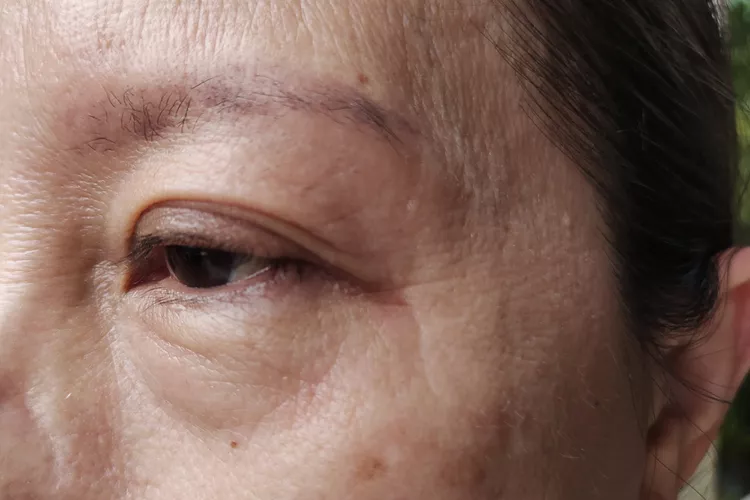
Aging loosens the structures that once held everything up
Over time, the skin around your eyes thins. Collagen decreases. Elastic fibers stretch. What was once tight begins to sag. This happens slowly. Quietly. The upper lids start to droop.
The muscles that lift your eyelids also weaken. Fat pads shift. Skin folds begin to form. You may not notice it at first. But then your reflection looks tired—even when you’re not.
It’s not sudden. It’s not dramatic. But it’s constant. A slow settling of everything the face once held high.
Genetics decide more than you think
Some people are born with heavy eyelids. The crease sits lower. The skin folds earlier. It’s not about aging. It’s about DNA.
If your parents or siblings have droopy lids, chances are you might too. Sometimes it shows up in your twenties. Sometimes much later. But it’s not random.
Genetics doesn’t just shape your eye color or bone structure—it shapes how your eyelids age and rest.
Muscle fatigue changes how the eyelids function
The levator muscle is responsible for lifting your upper eyelid. When this muscle weakens—or its tendon stretches—the lid begins to droop. This condition is called ptosis.
It may happen in one eye or both. Sometimes it’s present from birth. Other times it develops slowly.
You might start raising your eyebrows without noticing. Straining to see. Feeling tension in your forehead by day’s end.
It’s not laziness—it’s compensation.
Nerve issues can affect eyelid position
Sometimes droopy eyelids result from nerve problems. The nerves that control eyelid muscles might get damaged by injury, disease, or even aging.
Conditions like Horner’s syndrome or third nerve palsy can lead to sudden or gradual lid drooping. These causes aren’t common—but they matter. Especially if the droop happens quickly or comes with other symptoms.
If you notice asymmetry, blurred vision, or new headaches, it’s worth checking more deeply.
Eye surgery or trauma may shift lid balance
Blepharoplasty. Cataract surgery. LASIK. Even accidental injuries near the eye can change the way the eyelid sits. Scar tissue. Swelling. Muscle disruption. These all influence the lid’s behavior.
Sometimes the change is temporary. Sometimes it’s not. But it can happen even with skilled surgery—because the eye area is complex and deeply sensitive.
What was lifted once can be loosened again.
Allergies and inflammation cause temporary droop
Seasonal allergies. Chronic irritation. Eye rubbing. These may not seem serious—but over time, they cause swelling and stretching of delicate eyelid tissue.
Inflamed skin loses elasticity. Puffy eyes become saggy lids. Repeated irritation causes breakdowns that don’t fully repair.
Even something as simple as dryness can contribute.
It’s not always dramatic—but it adds up.
Medical conditions sometimes play a role
Autoimmune conditions. Neuromuscular diseases. Tumors near the eye socket. These are rare—but real—causes of eyelid droop.
Myasthenia gravis, for example, weakens muscles—including those in the eyelid. Thyroid eye disease alters tissue behind the eye. Even diabetes can impact nerve signals to the muscle.
If the drooping comes with weakness, double vision, or changes in pupil size, further testing is needed.
Long-term contact lens use can stretch eyelids
Wearing hard or soft contact lenses for years affects more than just your cornea. The act of inserting and removing lenses stretches the eyelid tissue.
This happens gradually. Especially in people who have worn lenses for decades. The result? A tired, sagging appearance—not because of age, but because of habit.
What helps vision over time might quietly change the lid line.
Sleep and position impact how your lids behave
Side sleeping. Pressing your face into the pillow. Resting your hand on your cheek. These seem harmless—but over years, they create asymmetry. One lid may droop more than the other.
The face molds to pressure. Even small habits become long-term change.
If your lids behave differently on each side, sleep and posture may be part of the reason.
